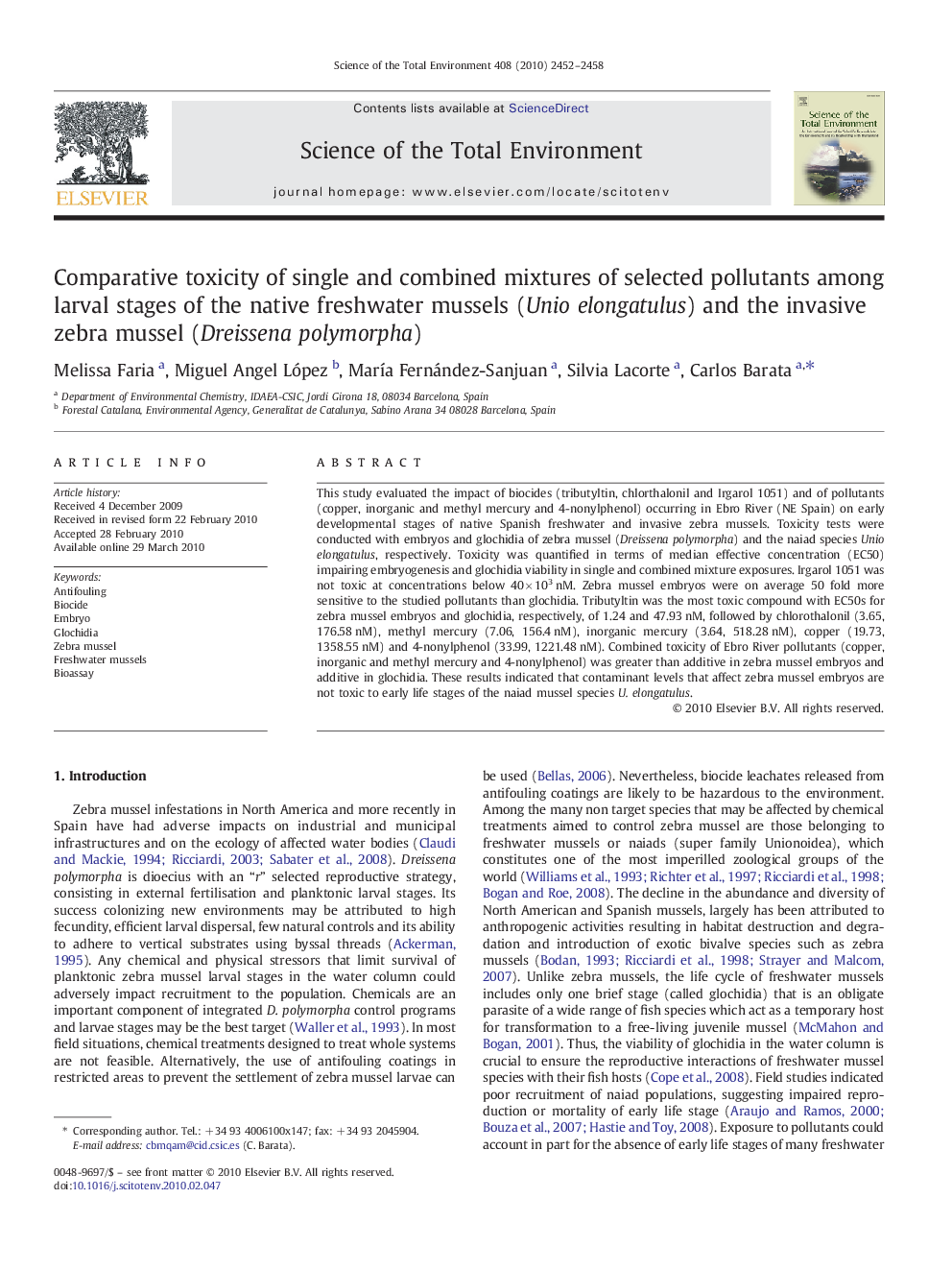| Article ID | Journal | Published Year | Pages | File Type |
|---|---|---|---|---|
| 4430754 | Science of The Total Environment | 2010 | 7 Pages |
This study evaluated the impact of biocides (tributyltin, chlorthalonil and Irgarol 1051) and of pollutants (copper, inorganic and methyl mercury and 4-nonylphenol) occurring in Ebro River (NE Spain) on early developmental stages of native Spanish freshwater and invasive zebra mussels. Toxicity tests were conducted with embryos and glochidia of zebra mussel (Dreissena polymorpha) and the naiad species Unio elongatulus, respectively. Toxicity was quantified in terms of median effective concentration (EC50) impairing embryogenesis and glochidia viability in single and combined mixture exposures. Irgarol 1051 was not toxic at concentrations below 40 × 103 nM. Zebra mussel embryos were on average 50 fold more sensitive to the studied pollutants than glochidia. Tributyltin was the most toxic compound with EC50s for zebra mussel embryos and glochidia, respectively, of 1.24 and 47.93 nM, followed by chlorothalonil (3.65, 176.58 nM), methyl mercury (7.06, 156.4 nM), inorganic mercury (3.64, 518.28 nM), copper (19.73, 1358.55 nM) and 4-nonylphenol (33.99, 1221.48 nM). Combined toxicity of Ebro River pollutants (copper, inorganic and methyl mercury and 4-nonylphenol) was greater than additive in zebra mussel embryos and additive in glochidia. These results indicated that contaminant levels that affect zebra mussel embryos are not toxic to early life stages of the naiad mussel species U. elongatulus.
